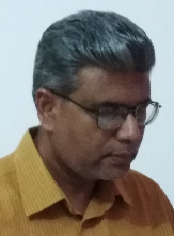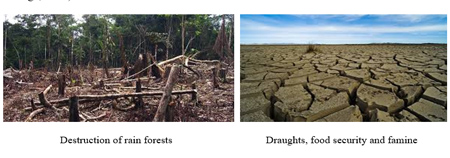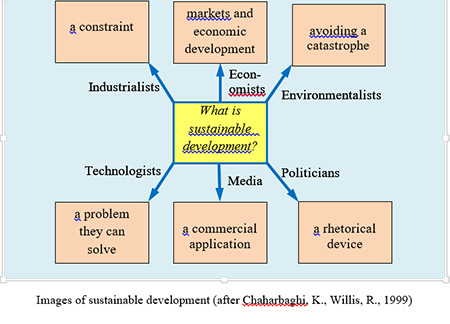Till Sun and Moon Shines [Part 3]
Sustainability: A Multifaceted Concept
|
For some fifteen million years, members of the family of man foraged as animals among animals. Times have changed and the world was still a wilderness 10,000 years ago, without farms or cities or roads. The pace of events has been explosive since then. The entire sequence from the first farming villages, the first sharp break with hunting-gathering, to a world dominated by cities, to the even more highly urbanized landscapes. During this entire period of time, there has been a consciousness of the nature, as the resource pool supporting the human survival. The patterns of such concerns would have taken different forms in different times, depending on the way humans understand and interact with the nature. Nature was thus a topic which each generation was taught by its predecessors and taught its successors |
 Eng. Chandana Jayawardana |
The popular understanding of sustainability is often linked to concepts like energy efficiency, reduction of environmentally harmful emissions, ecosystem preservation and other 'save the earth' efforts. Environmentalists consider climate change, caused by global warming, to be the greatest environmental threat amongst the many major environmental problems faced by society. This problem, they assert, is of society's own making and the product of society's unsustainable consumption and production decisions (Intergovernmental Panel on Climate Change, 1996).

Juxtaposed to the environmentalists are the economists who view the issue of sustainability through different conceptual prism. For many economists, the problem is a simple one, coming down to a basic Pigouvian issue of internalizing externalities (Chaharbaghi, K., 1998). The solution, as basic economic theory informs us, is twofold; (a) the impediments to the working of the price mechanism should be eliminated by removing subsidies from the energy sector and (b) the externality should be internalized by greening the tax system. From this perspective, the issue of the depletion of the earth�s capitol stock is also resolved in neo-classical theory thorough substitution.
Technologists have little doubt that they can go a long way to providing the capabilities to make sustainability a reality. Thus environmental technologies are the means through which sustainability can be achieved (Sousane, R., 1996). This will be done through the reduction of risk, the enhancement of cost effectiveness and improvements in process efficiency leading to the creation of products and processes that are environmentally beneficial.

Politicians who have to make a compromise environmental wishes and hard economic reality, take on board many of the concerns raised by environmentalists. Taking the advantage of uncertainty of deducting how much and at what rate the climate is changing, politicians call in more scientists to investigate and more technologists to find solutions, often just a cover for business rather than finding real solutions (Chaharbaghi, K., Willis, R., 1999).
The media treats sustainability as a commercial opportunity, with news editors capitalizing on the rising tide of environmental awareness. Given the interests of the media together with the communication revolution, industrialists tend to consider sustainability is a public relation. They realize that they can suffer from a heavy long term costs in public relations by harming the broader environment through actions that would bring only short term gains (Chaharbaghi, K., Willis, R., 1999).

From the above analysis, it becomes apparent that sustainable development is surrounded by many complex, contentious and conflicting issues. Some scholars suggest that if sustainable development to become meaningful, the debate surrounding it should adopt the same guiding principles observed in nature (Chaharbaghi, K., Willis, R., 1999). Within this context, industrial ecologists now believe that if industry is to be sustainable it is necessary to change the paradigm fundamentally through which the relationship between industry, society and the natural world is viewed (Barnes, P.E., 1998). For example, in the natural system the concept of waste is non-existent; the waste of one organism is the resource of other organisms. Sri Lankans, as a society prevailing for thousands of years, may have many contributions in this respect. In the coming issues, such possible contributions will be discussed in detail.
References
Barnes, P.E., ‘Industrial Ecology’, Business and Economic Review, 1998, 44(2), pp.231-24
Chaharbaghi, K., ‘The rhetoric of sustainable development’, Proceedings of International Conference on Management of Technology, Orlando, Florida, USA, 1998
Chaharbaghi, K., Willis, R., ‘The survival game’, Proceedings of the Association for Global Business Conference, New Orleans, Louisiana, 1998
Chaharbaghi, K., Willis, R., ‘The Study and Practice of Sustainable Development’, Engineering Management Journal, 9(1), 1999, pp.41-48
Intergovernmental Panel on Climate Change, Climate change 1995: The science of climate change, Cambridge University Press, Cambridge, 1996
Sousane, R., ‘Overview of Environmental Technologies’, Business America, 117 (4), 1996
Note: Photos have been down loaded from the some websites.

"Eng. Chandana Jayawardana has earned his first degree in Electrical Engineering from University of Moratuwa and then, post graduate qualifications in Industrial Engineering and Buddhist Studies. He is currently working as Design Manager, Balfour Beatty Ceylon (Pvt) Ltd, Katunayake."





